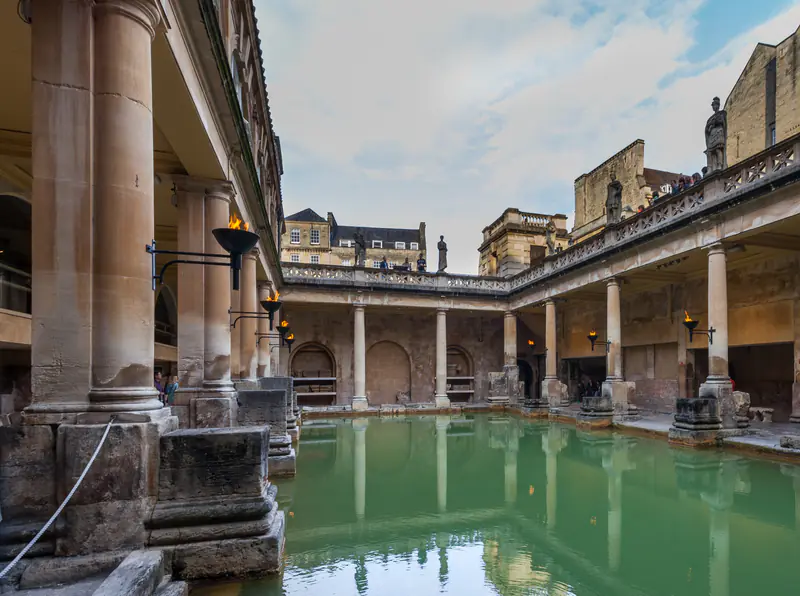UNESCO World Heritage Sites in Czech Republic
Heritage Overview
The Czech Republic's UNESCO World Heritage sites reflect centuries of European cultural and architectural achievement at the heart of Central Europe, preserving exceptional examples of Gothic, Renaissance, and Baroque architecture alongside distinctive cultural landscapes. The country's heritage encompasses medieval town centres, historic monuments, and spa towns that shaped European arts, science, and urban development. Historic cities and architectural ensembles demonstrate remarkable preservation of medieval street patterns, Renaissance château complexes, and Baroque religious monuments. These sites showcase the artistic and cultural flourishing under Bohemian kings and Habsburg rule, featuring exceptional examples of Gothic cathedral architecture, innovative Renaissance additions, and elaborate Baroque modifications. The architectural diversity reflects Bohemia's position as a cultural crossroads and centre of European intellectual life. Cultural landscapes preserve distinctive agricultural systems, château complexes integrated with designed parks, and historic spa towns that developed around mineral springs. Jewish heritage sites document centuries of Central European Jewish cultural and religious life. Together, these sites illustrate the Czech lands' contributions to European architecture, arts, and sciences whilst preserving evidence of cultural diversity, religious tolerance, and architectural innovation across multiple historical periods.
Essential Information
Visa Requirements
The Czech Republic is part of the European Union and Schengen Area. EU, EEA, and Swiss citizens can enter freely with valid identification. Visitors from many countries including the United States, Canada, Australia, Japan, and New Zealand can stay up to 90 days within 180 days without visas. From 2026, travellers from visa-exempt countries require ETIAS (European Travel Information and Authorisation System) authorisation before arrival, valid three years at €7. Other nationalities should verify requirements with Czech embassies. Passports must remain valid for three months beyond intended departure from the Schengen Area. The Czech Republic maintains full border controls.
Currency
The official currency is the Czech Koruna (CZK), as the country has not adopted the Euro despite EU membership. Credit and debit cards (Visa, Mastercard, Maestro) are widely accepted in hotels, restaurants, shops, and tourist attractions in cities, though smaller establishments prefer cash. ATMs are abundant throughout the country, typically charging minimal fees with withdrawal limits around 10,000 CZK. Cash remains important for smaller shops, markets, and rural areas. Currency exchange offices (směnárna) are common in Prague but vary in rates—use banks or ATMs for better rates. Avoid heavily touristed areas. Tipping is customary by rounding up or adding 10%.
Language
The official language is Czech, a West Slavic language written in Latin script with distinctive diacritical marks. English proficiency is good and improving, particularly amongst younger generations and in Prague and tourist areas, with approximately 30% of Czechs speaking some English. German is also understood by many, especially older generations and in border regions. Russian was widely taught during the communist era but is declining amongst younger people. Tourist sites, restaurants, and hotels in Prague offer English menus and information. Signage in tourist areas includes English. Learning basic Czech phrases (Dobrý den for hello, Děkuji for thank you) is appreciated.
Climate
The Czech Republic experiences a temperate continental climate with four distinct seasons. Summers (June-August) are warm with temperatures typically 20-28°C, occasionally reaching 30°C during heatwaves, with afternoon thunderstorms common. Winters (December-February) are cold with temperatures averaging -5 to 5°C, regular snowfall, and overcast skies. Spring (April-May) and autumn (September-October) offer mild conditions ideal for sightseeing, with temperatures ranging 10-18°C and fewer tourists. Spring brings blooming gardens and longer days, whilst autumn features colourful foliage. The best visiting period is May through September for pleasant weather, though summer brings peak tourist crowds. Winter attracts visitors to Christmas markets.
